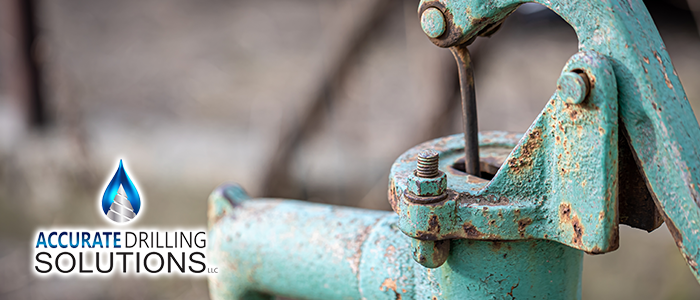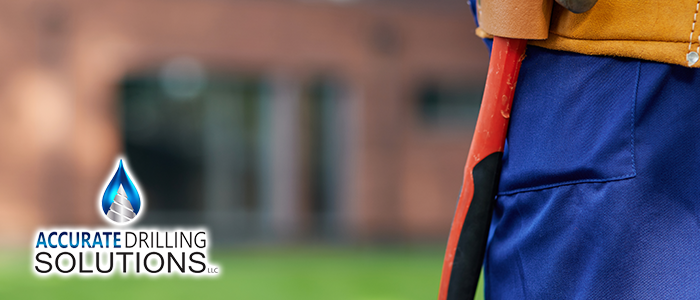
Well Abandonment Procedures: What Clearwater Residents Need to Know
Water wells are valuable assets, providing access to groundwater for homes, businesses, and agriculture. However, there comes a time when a well may no longer be needed, becomes unusable, or poses a potential risk. In such cases, simply capping it or ignoring it is not sufficient and can be dangerous. Proper well closure, known as abandonment, is crucial for safety and environmental protection. Understanding Well Abandonment Procedures: What Clearwater Residents Need to Know is essential for responsible well ownership in Clearwater and nearby communities like Largo.
Why Proper Well Abandonment is Necessary
An unused or improperly maintained well can become a direct conduit for contaminants to enter the aquifer, the underground layer of rock and soil that holds groundwater. Surface runoff carrying pesticides, herbicides, fertilizers, bacteria from septic systems, or other pollutants can flow down the well casing, potentially contaminating the drinking water supply for the property owner and possibly neighboring wells drawing from the same aquifer. This poses significant health risks.
Furthermore, abandoned wells can present physical safety hazards. Open holes at the surface are dangerous for people and animals. Even wells with covers can deteriorate over time, potentially collapsing or creating sinkholes. Properly abandoning a well eliminates these environmental and safety risks. State and local regulations mandate specific procedures for well abandonment precisely because of these potential dangers, ensuring the protection of public health and groundwater resources. The Florida Department of Environmental Protection (DEP) provides oversight and guidelines for these activities.
When is Well Abandonment Required?
Well abandonment is typically required under several circumstances:
- Well is No Longer in Use: If a property connects to a municipal water supply and the well is permanently taken out of service.
- Well is Unusable: If the well is dry, produces poor quality water that cannot be adequately treated, or is damaged beyond economical repair.
- Well is Improperly Located: If the well does not meet current setback requirements from potential contamination sources (like septic systems) or property lines.
- Well Poses a Contamination Risk: If the well’s construction integrity is compromised (e.g., cracked casing, faulty seal) allowing surface water intrusion.
- As Required by Regulations: Sometimes abandonment is mandated during property redevelopment or other specific situations outlined by regulatory bodies like the local Water Management District (WMD). For Clearwater and Largo, this is typically the Southwest Florida Water Management District (SWFWMD).
Leaving a well in a state of disuse without proper abandonment is generally not compliant with regulations and poses ongoing risks.
The Well Abandonment Process: Step-by-Step
Proper well abandonment is a technical process that must be performed by a licensed water well contractor according to specific state and local regulations. While procedures can vary slightly based on well type, depth, and geology, the general steps are as follows:
1. Permitting: The first step is typically to obtain an abandonment permit from the relevant regulatory agency (usually the WMD). The licensed contractor usually handles this application process.
2. Site Preparation and Clearing Obstructions: The area around the wellhead is cleared. Any obstructions within the well bore, such as old pumps, pipes, wiring, or debris, must be removed. This is crucial to ensure the sealing material can fill the entire well column without voids.
3. Measuring and Assessment: The total depth and diameter of the well are confirmed.
4. Filling and Sealing: This is the most critical step. The well must be filled from bottom to top with an approved, impermeable sealing material. Commonly used materials include neat cement grout (a mixture of Portland cement and water) or bentonite clay grout. The material is typically pumped into the well through a tremie pipe, which is lowered to the bottom and gradually raised as the well fills, ensuring there are no gaps or air pockets. The goal is to restore the confining layers that prevent water (and contaminants) from moving between different aquifer zones or from the surface down into the aquifer.
5. Casing Removal (Optional/Situational): In some cases, regulations may require the upper portion of the well casing to be cut off below ground level.
6. Surface Completion: The top few feet of the well may be capped with concrete, and the site is backfilled and graded to match the surrounding landscape, eliminating any surface depression.
7. Documentation: The licensed contractor submits a well abandonment completion report to the permitting agency, certifying that the well was abandoned according to regulations.
Risks of Improper Well Abandonment
Attempting to abandon a well without following proper procedures or hiring an unlicensed individual can lead to serious consequences. Improperly sealed wells can still act as conduits for contamination, potentially polluting the aquifer and creating liability for the property owner. If the sealing material is not placed correctly or is inappropriate, it may fail over time.
Failure to remove obstructions can create voids in the seal, compromising its integrity. Furthermore, property owners may face fines or legal action from regulatory agencies if a well is not abandoned according to code. The cost of remediating contamination caused by an improperly abandoned well can be astronomical compared to the cost of proper abandonment by a licensed professional.
Costs Involved in Well Abandonment
The cost of well abandonment varies depending on several factors, including the well’s depth and diameter, the type and amount of sealing material required, the difficulty of removing obstructions, site accessibility, and local contractor rates in the Clearwater and Largo areas. Obtaining quotes from several licensed water well contractors is recommended.
While there is a cost associated with proper abandonment, it should be viewed as a necessary investment to eliminate long-term liability, protect public health, and safeguard environmental resources. The cost of inaction or improper abandonment can be far greater.
Hiring a Licensed Professional is Crucial
Florida law requires that well abandonment be performed by a licensed water well contractor. These professionals have the necessary training, equipment, and knowledge of state and local regulations (like those enforced by SWFWMD) to ensure the job is done correctly and safely. They understand the local geology and appropriate sealing techniques.
When hiring a contractor, verify their license (Florida DBPR License Lookup), check references, and ensure they carry adequate liability insurance. A reputable contractor will handle the permitting process and provide documentation confirming proper abandonment upon completion.
Conclusion: Responsible Closure for Clearwater Wells
Proper well abandonment is a critical responsibility for property owners in Clearwater and Largo when a well is no longer needed or viable. It is not merely filling a hole; it’s a carefully regulated process designed to protect precious groundwater resources from contamination and eliminate physical safety hazards. Understanding the reasons for abandonment, the required procedures, and the importance of hiring a licensed professional ensures compliance and safeguards both the environment and public health for the future.
If you have an unused or problematic well on your property that requires professional abandonment services, contact the experts. For compliant and thorough well abandonment procedures in the Clearwater area, consult with Accurate Drilling Solutions.
continue reading
Related Posts
Largo Businesses: Maximizing Your Pump System Performance For businesses operating
Well Maintenance Tips for Bartow Property Owners For property owners
Dade City Commercial Water Solutions: A Complete Guide For businesses






